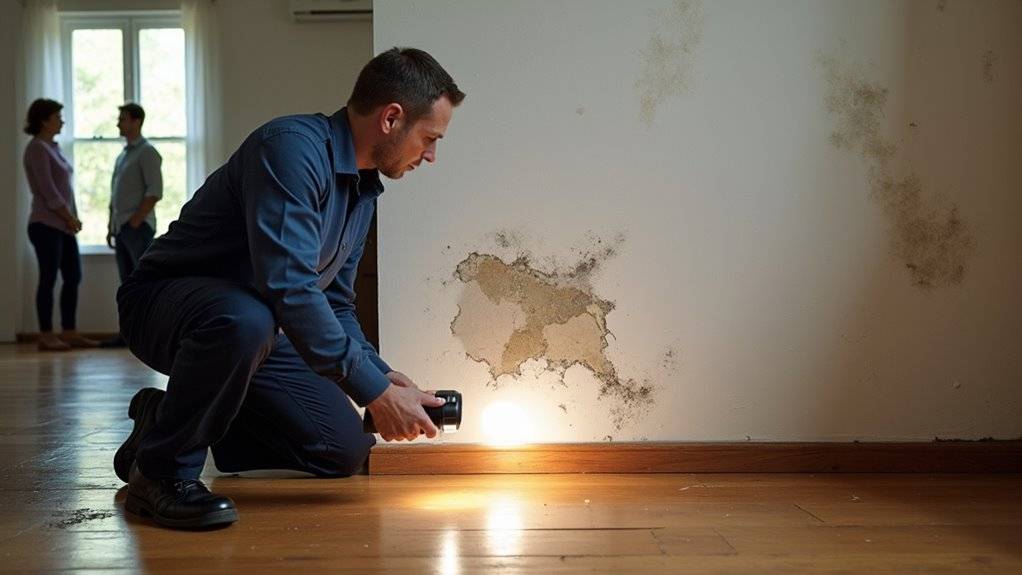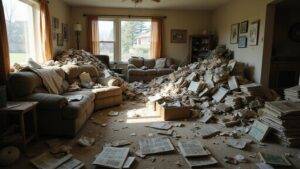Selling a home can be stressful, especially when water damage is present. Even small leaks or stains can worry buyers and home inspectors. Water issues can lower your home’s value and make sales more difficult.
If you ignore water damage, the problem can quickly grow worse. Hidden mold and rot might develop behind walls or under floors. This can cause buyers to walk away or demand costly repairs. Water damage affects home inspections and sales by raising red flags, lowering value, and complicating negotiations.
You can protect your sale by finding and fixing water issues early. Honest disclosure and proper repairs will build trust with buyers. This blog will guide you step-by-step to handle water damage and keep your home sale on track.
Key Takeaways
- Visible or hidden water damage discovered during inspections can delay sales and lower a property’s market value.
- Buyers often request repairs, credits, or price reductions when water damage or mold is found in inspection reports.
- Unaddressed water damage raises concerns about structural integrity, leading some buyers to withdraw or renegotiate offers.
- Accurate documentation and prompt repair of water damage improve trust, negotiation outcomes, and transaction speed.
- Insurance claims for water damage may increase premiums and affect future coverage, impacting buyer decisions and home affordability.
Common Signs of Water Damage in Homes
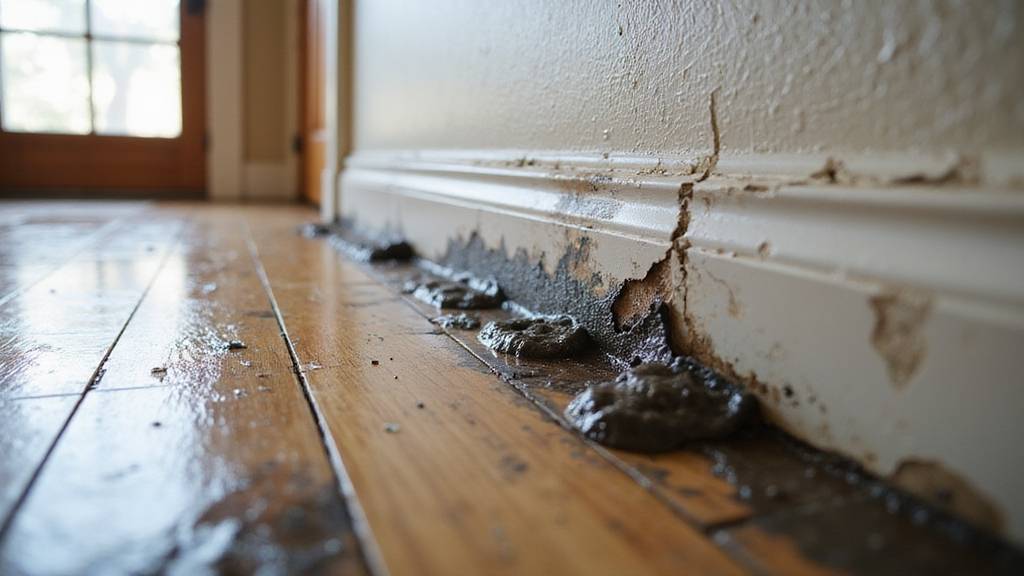
Water damage in homes can show up in several clear ways. Stains on ceilings, walls, or floors often mean leaks are present. Discoloration or bubbling paint may also point to hidden moisture. Water intrusion can lead to further structural issues if not addressed promptly.
A musty smell usually means mold or mildew is growing somewhere. Basements, crawl spaces, and areas under sinks are common problem spots. If you notice these odors, you should check for water damage. Additionally, home inspection findings often reveal these issues, emphasizing the importance of thorough evaluations before sale. Surfaces that feel damp or soft can be a warning sign. Peeling wallpaper or crumbling drywall may happen if moisture is present. If any of these signs appear, you should act quickly to prevent bigger problems.
Causes of Water Damage Frequently Found During Inspections
Water damage often comes from a few common sources. Inspections usually reveal plumbing leaks, roof leaks, or poor drainage as main causes. If you know these causes, you can prevent many issues.
Plumbing leaks often happen in bathrooms or kitchens. Worn pipes or loose seals let water get into walls and floors. This may lead to mold, rot, or stains.
Roof leaks are another frequent problem. Damaged shingles or flashing let water enter attics and ceilings. If this happens, stains and rot can appear.
Poor drainage can affect your home’s foundation. Water may seep into basements or crawl spaces if drainage is bad. This can cause cracks and other damage.
Regular maintenance and early detection are crucial in reducing water damage risks. You can avoid major problems if you fix these issues early. Home inspection and quick repairs help keep your home safe. Prevention always costs less than fixing water damage later.
How Inspectors Identify Hidden Water Issues
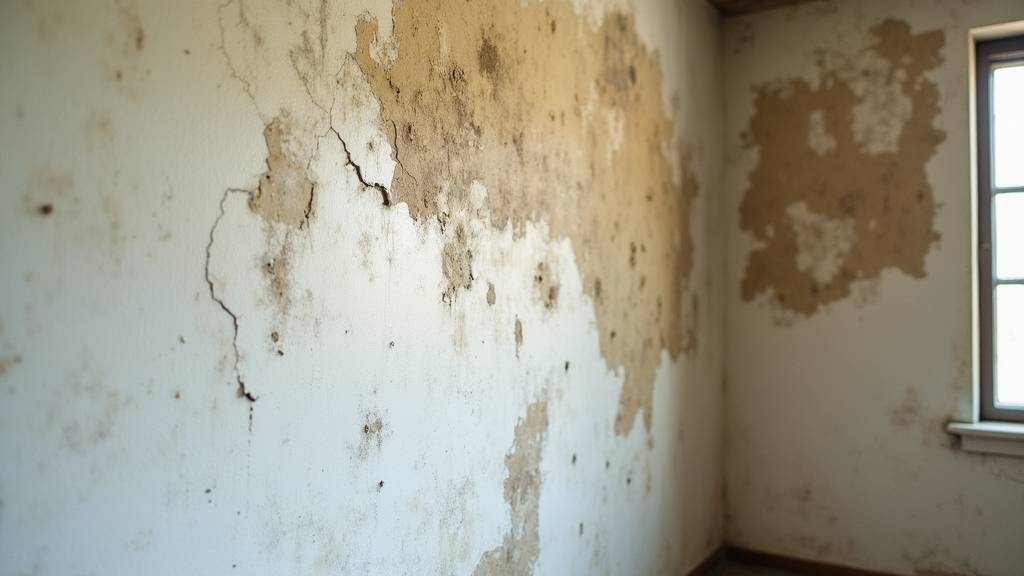
Inspectors find hidden water issues by using a careful and step-by-step process. They look for signs that most people miss. This helps them spot problems that are not obvious.
Inspectors check ceilings, floors, and baseboards for stains or warping. These signs often mean there is moisture behind the surface. In basements, they look for musty smells or white marks on walls. Detecting water intrusion early can prevent extensive damage and costly repairs later.
They also check under sinks and around appliances for pipe leaks. Tools like moisture meters and thermal cameras help them find damp spots behind walls. These tools let inspectors check for water without damaging the home.
If they see mold or damaged insulation, inspectors know there may be hidden water. Their process ensures buyers find out about water issues before buying. This careful inspection protects you from surprises later. Being aware of water damage in homes can help sellers and buyers make informed decisions and avoid costly repairs later.
The Impact of Water Damage on Property Value
Water damage lowers a property’s value. Buyers and sellers both see it as a serious problem. Appraisers often reduce the home’s price because of repairs and future risks.
If water damage is present, buyers may worry about mold or hidden issues. Real estate agents know that even after fixing the damage, the home’s value may still drop. A property with any water damage history is often seen as a bigger risk.
Insurance claims from water damage can raise future premiums. Higher insurance costs make the home less attractive to buyers. Owners should document and complete all repairs to protect the property’s value.
Additionally, water damage mitigation can help preserve the home’s integrity and prevent further issues that might impact its saleability.
Legal Disclosure Requirements for Water Damage
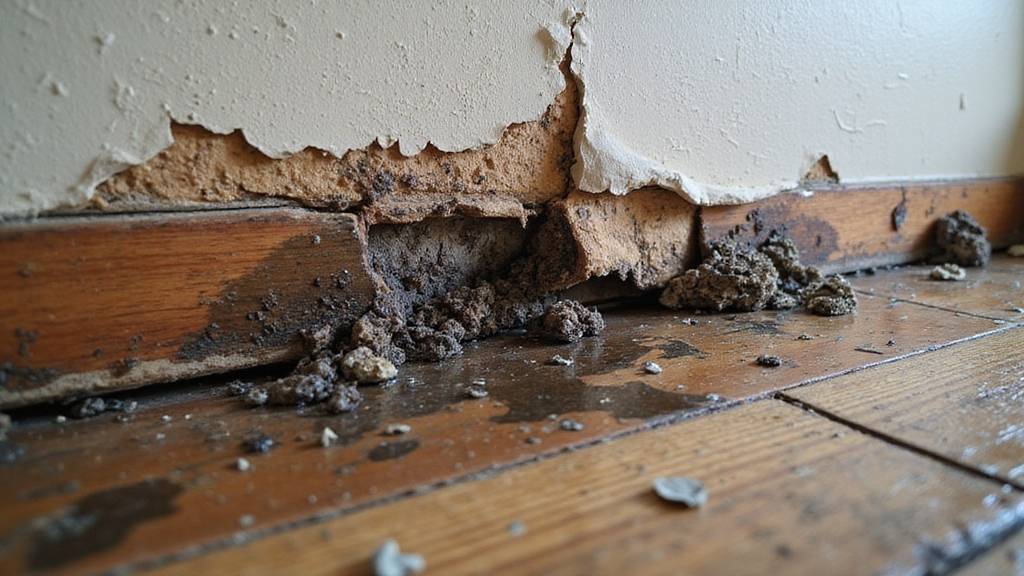
You must tell buyers about any water damage you know about. This rule protects both you and the person buying your home. If you hide problems, you could face legal trouble. Disclosing foundation issues and related water damage helps maintain transparency throughout the sale process.
Always keep records of repairs and professional inspections. These documents can help prove you followed the law. Properly understanding contract rules ensures you are aware of your obligations during the sale. If you meet your disclosure duties, you help build trust and keep the sale safe.
Repair Options for Water-Damaged Properties
Repairing water damage needs careful planning to keep your property safe. Start by checking how much damage there is. If the structure is weakened, fix it right away to avoid bigger problems.
A structural engineer or experienced contractor should inspect cracks or damaged supports. Foundation issues can cause the building to settle or collapse if left untreated. Quick action helps prevent costly repairs later.
Plumbing repairs are also important. Replace old pipes and fix leaks to stop more water damage. Make sure all plumbing meets current safety codes.
Do not ignore hidden damage. Check walls and floors for problems you cannot see easily. This helps prevent future issues and protects your home’s value. Understanding home inspections is essential to identify both visible and hidden water damages that could affect your property’s safety and worth. Additionally, having a professional assess the extent of water intrusion can help determine the best course of action to prevent mold growth and structural deterioration.
Mold and Mildew: Secondary Concerns From Water Damage
Mold and mildew are common problems after water damage. These issues can harm your home and affect your health. If water is not dried quickly, mold can grow within two days.
Mold often hides behind walls or under floors where you cannot see it. Inspectors look for musty smells, stains, or high humidity as signs of mold. If they find mold, buyers may lose interest and your home’s value may drop.
Mold spores can damage wood, drywall, and other materials. People with allergies or asthma may feel worse if mold is present. If you find mold early, you can fix it with less cost and trouble.
If mold is not removed, repairs become harder and more expensive. Selling your home will also take longer. Early detection of mold can help prevent extensive repairs later and reduce overall costs. Quick action keeps problems from getting worse. Recognizing hidden damage early can help prevent extensive repairs later.
Insurance Considerations When Water Damage Is Discovered
When you uncover water damage, you need to understand how to navigate your insurance claim process efficiently to protect your interests. Your approach can influence not only your claim’s success but also the future cost of your policy premiums.
It’s essential to know what your policy covers and how insurers assess risk after a claim. Being aware of coverage limits and exclusions can help you better prepare for potential out-of-pocket expenses. Additionally, understanding the claims process can facilitate a smoother experience and prevent delays.
Navigating Insurance Claim Processes
Navigating the insurance claim process helps protect your money after water damage. You should first check your policy to see what is covered. If you live in a flood zone, standard insurance may not pay for flood damage.
You need to take clear photos and write notes about all damage you see. If you act quickly, you can prevent more harm and make your claim stronger. Insurers usually ask you to stop leaks or dry wet areas right away.
You must call your insurance company as soon as possible and ask what to do next. If you keep all receipts and records, it will help your claim. You may get your money back faster if you follow these steps.
Impact on Policy Premiums
Filing a water damage claim can increase your insurance premiums. Insurance companies see water damage as a sign of higher risk. This often means you will pay more for your policy in the future.
If an inspection finds water damage, your insurer may change your coverage. They could raise your deductible or limit coverage for water-related issues. In some cases, they may exclude water damage from your policy.
You should review any changes to your policy carefully. Ask your agent how past claims affect your premiums. If you understand these factors, you can make better choices when selling your home or dealing with insurance.
Negotiating Repairs After a Home Inspection
When negotiating repairs, you should prioritize essential water damage issues that threaten the home’s structure or safety. Use your inspection report as leverage, supporting your requests with clear documentation. By focusing on critical repairs and presenting objective findings, you’ll strengthen your position at the bargaining table. Additionally, working with a trusted local home buying expert can streamline the process and ensure a fair resolution, especially when dealing with water damage repairs.
Prioritizing Essential Water Repairs
Essential water repairs should be your top priority after a home inspection. Water damage can weaken the structure and increase repair costs later. Immediate action helps prevent bigger problems.
Start with fixing active plumbing and roof leaks. These issues can get worse quickly and cause hidden damage. If you stop water from getting in, you protect the home.
Check how serious each problem is and where it happens. Focus on main water lines, large roof areas, and basement leaks first. Less urgent repairs can wait.
Fixing water issues right away protects your investment. Buyers will see that you care for the home. Quick repairs also help keep your property’s value strong.
Leveraging Inspection Findings
A home inspection report helps you negotiate with the seller. It shows exactly where water damage or other problems exist. If the inspector is highly qualified, the report will be more convincing.
You should point to the parts of the report that mention water intrusion, mold, or structural issues. If the seller sees clear evidence, they may agree to repairs or a price cut. You could also ask for professional water damage repair if needed.
Using the inspection findings protects your investment. If you handle water problems early, you avoid bigger costs later. Clear requests based on the report can make negotiations smoother.
Buyer Reactions to Water Damage Findings
Even small signs of water damage in a home inspection can worry buyers. Buyers often see stains, smells, or leaks as serious problems. These concerns can lower how buyers value the property.
If water damage is found, buyers may fear hidden issues like mold or weak structures. They might ask for a lower price or repair credits. Some buyers could even decide not to buy the home.
Your chances of getting a good offer depend on how buyers react to water damage. If buyers trust the problem is fixed, they may still move forward. If not, water damage can affect the whole sale process.
Steps Sellers Can Take to Address Water Damage Before Listing
Sellers should fix water damage before listing a home. Buyers often avoid homes with water problems or lower their offers. Addressing damage early can prevent delays and extra costs during the sale.
Begin by checking the home for stains, warped areas, or musty smells. If you notice signs of water intrusion, hire a contractor for a full inspection. The expert can find the source and the extent of the problem.
It is important to repair the real cause, not just the visible damage. Common issues can include roof, plumbing, or foundation leaks. If you solve these, you lower the risk of future problems.
Consider adding waterproofing where needed. This could involve sealing cracks, fixing drainage, or installing moisture barriers. These steps help protect the home from new water issues.
Always keep records of all repairs and improvements. If you show buyers this information, it builds trust during the sale. Proper documentation can also make negotiations easier and faster.
Preventative Measures to Reduce Future Water Damage
Preventative measures can help reduce the risk of future water damage. Water damage is expensive to fix and can weaken your home. Simple steps can protect your property.
Waterproof sealants should be applied to basement walls and foundation cracks. Sump pumps can remove water from basements if flooding happens. Gutters and downspouts must be maintained to direct water away from your house.
Proper drainage is important for keeping water away from the foundation. Grading the yard allows water to flow away from the building. French drains can help in areas where water collects.
Plumbing should be checked for leaks and small problems should be fixed early. Regular inspections can catch issues before they become bigger. If you invest in these steps, you can lower your risk of water damage.
How Lenders View Homes With Water Damage History
Lenders are careful with homes that have a history of water damage. They worry about hidden problems, mold, and future repairs. Homes with past water issues may be harder to finance.
Most lenders will ask for detailed inspection reports. They may also require proof of repairs or upgrades after the damage. If you provide documentation of professional plumbing or water treatment work, your chances of approval may improve.
Without proof that the problem is fixed, lenders may see the home as risky. This could lead to higher interest rates or bigger down payments. In some cases, they might not approve the loan at all.
The Role of Professional Restoration Services in Home Sales
Professional restoration services play a key role when selling a home with water damage. These experts fix the damage and help maintain the property’s value. Their involvement can make buyers feel more confident about the purchase.
A certified restoration company uses approved methods to ensure all repairs are safe and effective. If you hire certified professionals, you show buyers you care about quality. Proper documentation from these experts supports your home’s inspection and disclosure statements.
Buyers may trust a home more if they know certified experts handled the repairs. If you use professional services, you are more likely to pass inspections. This can lead to quicker sales and better offers.
Conclusion
If you want to sell your home smoothly, you should address water damage before listing. Water issues can lead to lower sale prices and longer time on the market. If you fix problems early, you can attract more buyers and avoid inspection delays.
If you are worried about repairs or want a faster sale, you can consider selling directly for cash. Homes with damage can be hard to sell through traditional methods. We buy houses for cash, making the process quick and simple for homeowners.
If you are ready to move forward, we at Freedom Path Investors can help. We offer fair cash offers for homes in any condition. Contact us today to get started on a stress-free home sale.

